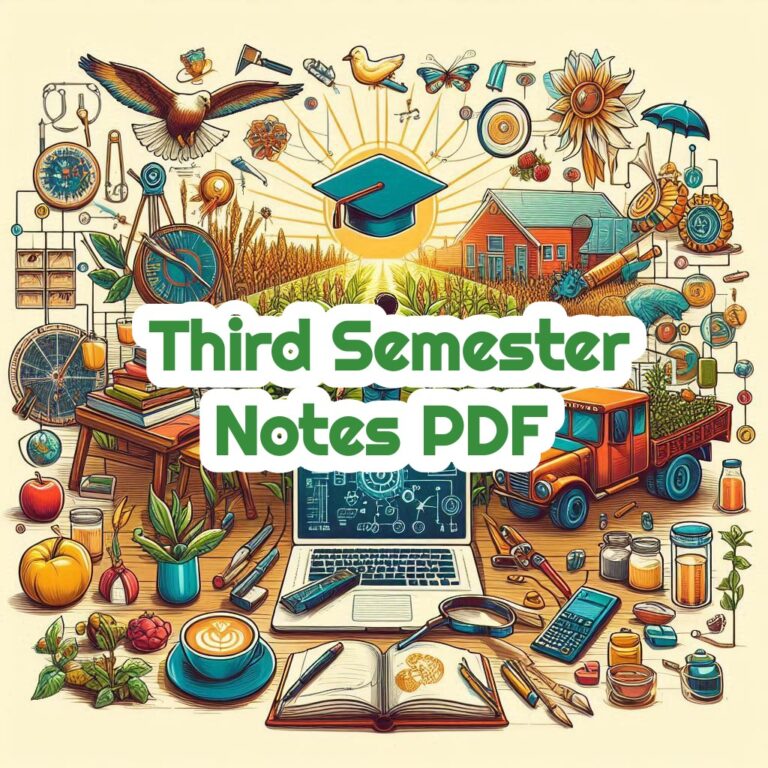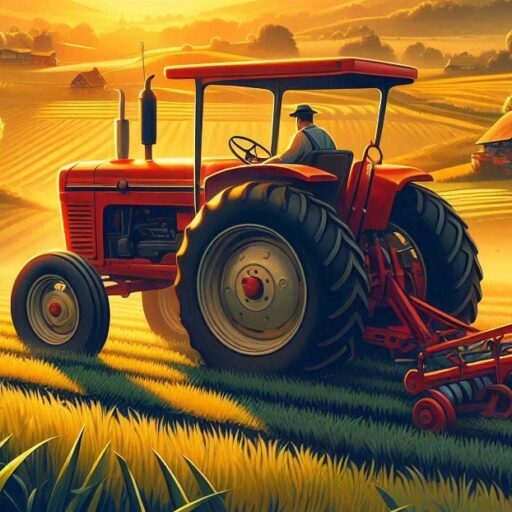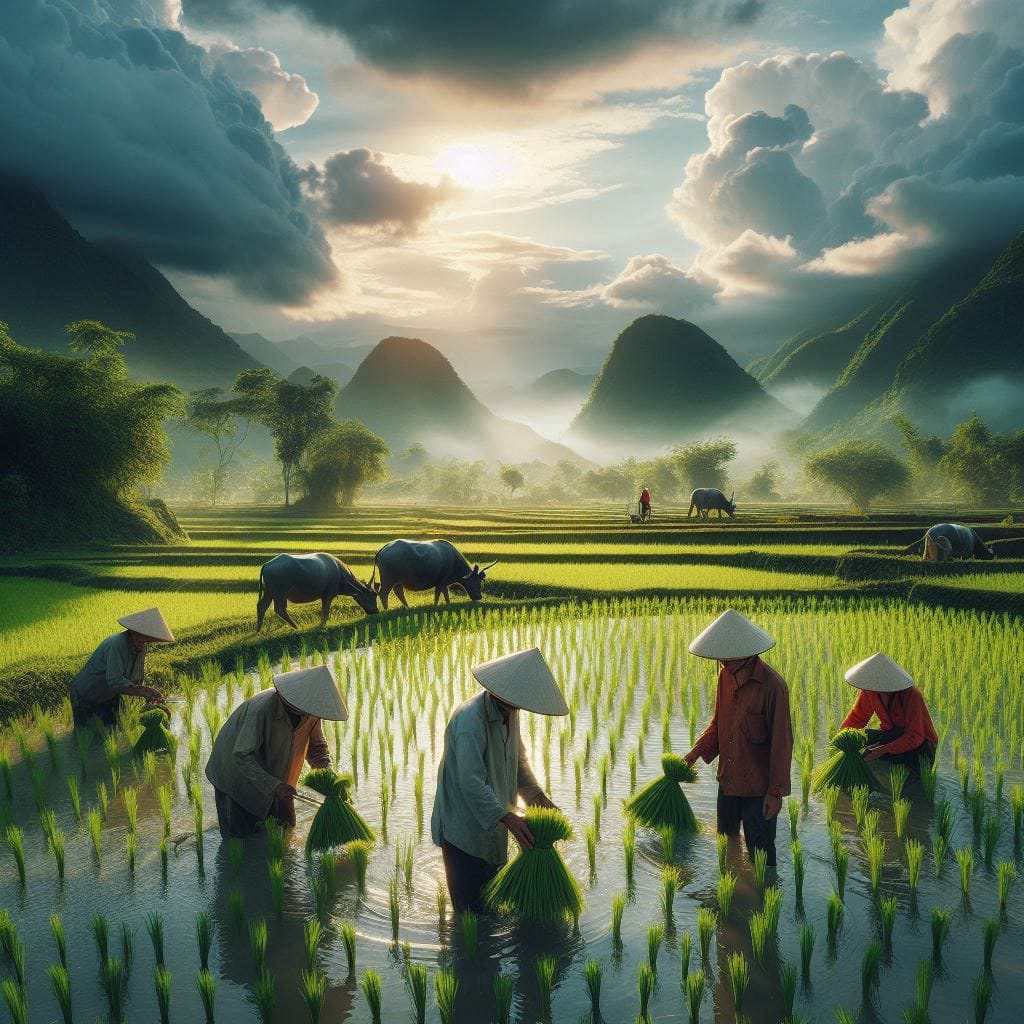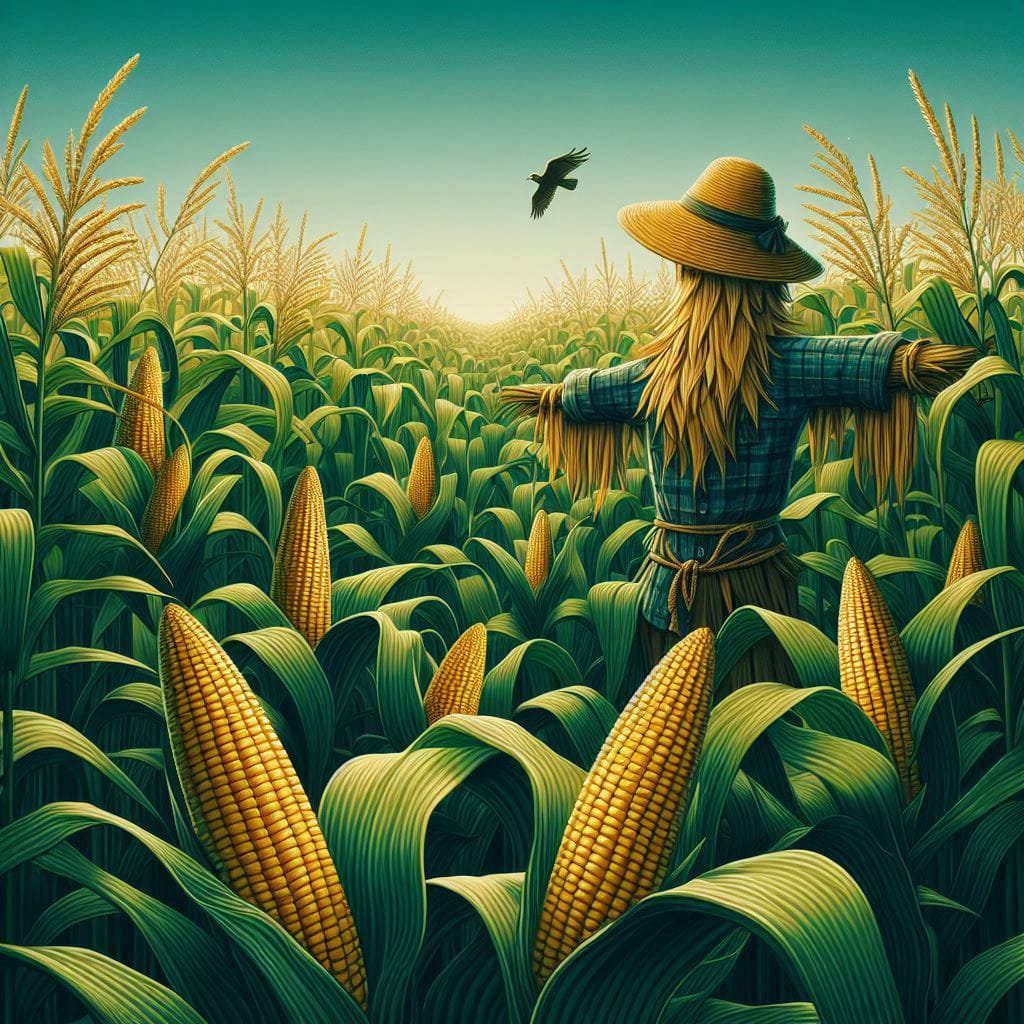BSc Agriculture 3rd semester notes pdf – There are total 9 courses in BSc Agriculture third semester. All of the notes are given below click on the link to download the notes pdf.
About BSc Agriculture
BSc Agriculture is an undergraduate four years program divided into eight semesters focused on the science and practice of farming and crop production. It covers a range of topics including soil science, plant biology, pest management, and agricultural economics. This degree prepares students for careers in farming, agribusiness, research, and environmental management, combining theoretical knowledge with practical skills to address global food security and sustainable agricultural practices.
BSc Agriculture third semester notes pdf download
| Crop Production Technology – I (Kharif Crops) | Download |
| Fundamentals of Plant Breeding | Download |
| Agricultural Finance and Cooperation | Download |
| Agriculture Informatics | Download |
| Farm Machinery and Power | Download |
| Production Technology for Vegetables and Spices | Download |
| Environmental Studies and Disaster Management | Download |
| Statistical Methods | Download |
| Livestock and Poultry Management | Download |
BSc Agriculture 4th semester Notes Download
BSc Agriculture 5th semester Notes Download
BSc Agriculture 3rd semester Notes Download
BSc Agriculture Second Semester Notes Download
BSc Agriculture 6th semester Notes Download
BSc Agriculture 1st Semester Notes Download
BSc Agriculture third semester syllabus
Crop Production Technology-I (Kharif Crops) 2(1+1)
Theory
Origin, geographical distribution, economic importance, soil and climatic requirements, varieties, cultural practices and yield of Kharif crops. Cereals – rice, maize, sorghum,
pearl millet and finger millet, pulses-pigeonpea, mungbean and urdbean; oilseeds- groundnut, and soybean; fibre crops- cotton & Jute; forage crops-sorghum, cowpea, cluster
bean and napier.
Practical
Rice nursery preparation, transplanting of Rice, sowing of soybean, pigeonpea and mungbean. maize, groundnut and cotton, effect of seed size on germination and seedling
vigour of kharif season crops, effect of sowing depth on germination of kharif crops, identification of weeds in kharif season crops, top dressing and foliar feeding of nutrients,
study of yield contributing characters and yield calculation of kharif season crops, study of crop varieties and important agronomic experiments at experimental farm. study of
forage experiments, morphological description of kharif season crops, visit to research centres of related crops.
Fundamentals of Plant Breeding 3(2+1)
Theory
Historical development, concept, nature and role of plant breeding, major achievements and future prospects; Genetics in relation to plant breeding, modes of reproduction and
apomixes, self – incompatibility and male sterility- genetic consequences, cultivar options. Domestication, Acclimatization, introduction; Centre of origin/diversity, component of
Genetic variation; Heritability and genetic advance; Genetic basis and breeding methods in self- pollinated crops-mass and pure line selection, hybridization techniques and
handling of segregating population; Multiline concept. Concepts of population genetics and Hardy-Weinberg Law, Genetic basis and methods of breeding cross pollinated crops,
modes of selection; Heterosis and inbreeding depression, development of inbred lines and hybrids, composite and synthetic varieties; Breeding methods in asexually
propagated crops, clonal selection and hybridization; Wide hybridization and pre-breeding; Polyploidy in relation to plant breeding, mutation breeding-methods and uses;
Breeding for important biotic and abiotic stresses; Biotechnological tools-DNA markers and marker assisted selection. Participatory plant breeding; Intellectual Property Rights,
Patenting, Plant Breeders and & Farmer’s Rights.
Practical
Plant Breeder’s kit, Study of germplasm of various crops. Study of floral structure of self-pollinated and cross pollinated crops. Emasculation and hybridization techniques in self
& cross pollinated crops. Consequences of inbreeding on genetic structure of resulting populations. Study of male sterility system. Handing of segregation populations.
Methods of calculating mean, range, variance, standard deviation, heritability. Designs used in plant breeding experiment, analysis of Randomized Block Design. To work out the
mode of pollination in a given crop and extent of natural out crossing. Prediction of performance of double cross hybrids.
Agricultural Finance and Co-Operation 3(2+1)
Theory
Agricultural Finance- meaning, scope and significance, credit needs and its role in Indian agriculture. Agricultural credit: meaning, definition, need, classification. Credit analysis:
4 R’s, and 3C’s of credits. Sources of agricultural finance: institutional and non-institutional sources, commercial banks, social control and nationalization of commercial banks,
Micro financing including KCC. Lead bank scheme, RRBs, Scale of finance and unit cost. An introduction to higher financing institutions – RBI, NABARD, ADB, IMF, world bank,
Insurance and Credit Guarantee Corporation of India. Cost of credit. Recent development in agricultural credit. Preparation and analysis of financial statements – Balance Sheet
and Income Statement. Basic guidelines for preparation of project reports- Bank norms – SWOT analysis.
Agricultural Cooperation – Meaning, brief history of cooperative development in India, objectives, principles of cooperation, significance of cooperatives in Indian agriculture. Agricultural Cooperation in India- credit, marketing, consumer and multi-purpose cooperatives, farmers’ service cooperative societies, processing cooperatives, farming
cooperatives, cooperative warehousing; role of ICA, NCUI, NCDC, NAFED.
Practicals
Determination of most profitable level of capital use. Optimum allocation of limited amount of capital among different enterprise. Analysis of progress and performance of
cooperatives using published data. Analysis of progress and performance of commercial banks and RRBs using published data. Visit to a commercial bank, cooperative bank
and cooperative society to acquire firsthand knowledge of their management, schemes and procedures. Estimation of credit requirement of farm business – A case study.
Preparation and analysis of balance sheet – A case study. Preparation and analysis of income statement – A case study. Appraisal of a loan proposal – A case study. Technoeconomic parameters for preparation of projects. Preparation of Bankable projects for various agricultural products and its value added products. Seminar on selected topics.
Agricultural Informatics2(1+1)
Theory
Introduction to Computers, Anatomy of Computers, Memory Concepts, Units of Memory, Operating System, definition and types, Applications of MS-Office for creating, Editing
and Formatting a document, Data presentation, tabulation and graph creation, statistical analysis, mathematical expressions, Database, concepts and types, creating database,
uses of DBMS in Agriculture, Internet and World Wide Web (WWW), Concepts and components.
Computer Programming, General Concepts, Introduction to Visual Basic, Java, Fortran, C/ C++, etc, concepts and standard input/output operations.
e-Agriculture, concepts, design and development. Application of innovative ways to use information and communication technologies (IT) in Agriculture. Computer Models in
Agriculture: statistical, weather analysis and crop simulation models, concepts, structure, inputs-outputs files, limitation, advantages and application of models for
understanding plant processes, sensitivity, verification, calibration and validation. IT application for computation of water and nutrient requirement of crops, Computer-controlled
devices (automated systems) for Agri-input management, Smartphone mobile apps in Agriculture for farm advises, market price, postharvest management etc; Geospatial
technology, concepts, techniques, components and uses for generating valuable agri-information. Decision support systems, concepts, components and applications in
Agriculture, Agriculture Expert System, Soil Information Systems etc for supporting Farm decisions. Preparation of contingent crop-planning and crop calendars using IT tools.
Practical
Study of Computer Components, accessories, practice of important DOS Commands. Introduction of different operating systems such as windows, Unix/ Linux, Creating, Files &
Folders, File Management. Use of MS-WORD and MS Power-point for creating, editing and presenting a scientific Document. MS-EXCEL – Creating a spreadsheet, use of
statistical tools, writing expressions, creating graphs, analysis of scientific data, handling macros. MS-ACCESS: Creating Database, preparing queries and reports, demonstration
of Agri-information system. Introduction to World Wide Web (WWW) and its components. Introduction of programming languages such as Visual Basic, Java, Fortran, C, C++.
Hands on practice on Crop Simulation Models (CSM), DSSAT/Crop-Info/CropSyst/ Wofost. Preparation of Inputs file for CSM and study of model outputs, computation of water
and nutrient requirements of crop using CSM and IT tools. Use of smart phones and other devices in agro-advisory and dissemination of market information. Introduction of
Geospatial Technology, for generating information important for Agriculture. Hands on practice on preparation of Decision Support System. Preparation of contingent crop
planning.
Farm Machinery and Power 2(1+1)
Theory
Status of Farm Power in India, Sources of Farm Power , I.C. engines, working principles of I C engines, comparison of two stroke and four stroke cycle engines , Study of
different components of I.C. engine, I.C. engine terminology and solved problems, Familiarization with different systems of I.C. engines: Air cleaning, cooling, lubrication ,fuel
supply and hydraulic control system of a tractor, Familiarization with Power transmission system : clutch, gear box, differential and final drive of a tractor , Tractor types, Cost
analysis of tractor power and attached implement, Familiarization with Primary and Secondary Tillage implement, Implement for hill agriculture, implement for intercultural
operations, Familiarization with sowing and planting equipment, calibration of a seed drill and solved examples, Familiarization with Plant Protection equipment, Familiarization operations, Familiarization with sowing and planting equipment, calibration of a seed drill and solved examples, Familiarization with Plant Protection equipment, Familiarization
with harvesting and threshing equipment.
Practicals
Study of different components of I.C. engine. To study air cleaning and cooling system of engine, Familiarization with clutch, transmission, differential and final drive of a tractor,
Familiarization with lubrication and fuel supply system of engine, Familiarization with brake, steering, hydraulic control system of engine, Learning of tractor driving,
Familiarization with operation of power tiller, Implements for hill agriculture, Familiarization with different types of primary and secondary tillage implements: mould plough, disc
plough and disc harrow . Familiarization with seed-cum-fertilizer drills their seed metering mechanism and calibration, planters and transplanter Familiarization with different
types of sprayers and dusters Familiarization with different inter-cultivation equipment, Familiarization with harvesting and threshing machinery.
Production Technology for Vegetable and Spices 2(1+1)
Theory
Importance of vegetables & spices in human nutrition and national economy, brief about origin, area, production, improved varieties and cultivation practices such as time of
sowing, sowing, transplanting techniques, planting distance, fertilizer requirements, irrigation, weed management, harvesting, storage, physiological disorders, disease and pest
control and seed production of important vegetable and spices.
Practical
Identification of vegetables & spices crops and their seeds. Nursery raising. Direct seed sowing and transplanting. Study of morphological characters of different vegetables &
spices. Fertilizers applications. Raising of nursery of vegetables & spices. Vegetables & spices seed extraction. Harvesting & preparation for market. Economics of vegetables
and spices cultivation.
Environmental Studies and Disaster Management 3(2+1]
Theory
Multidisciplinary nature of environmental studies Definition, scope and importance.
Natural Resources: Renewable and non-renewable resources, Natural resources and associated problems. a) Forest resources: Use and over-exploitation, deforestation, case
studies. Timber extraction, mining, dams and their effects on forest and tribal people. b) Water resources: Use and over-utilization of surface and ground water, floods, drought,
conflicts over water, dams-benefits and problems. c) Mineral resources: Use and exploitation, environmental effects of extracting and using mineral resources, case studies. d)
Food resources: World food problems, changes caused by agriculture and overgrazing, effects of modern agriculture, fertilizer-pesticide problems, water logging, salinity, case
studies. e) Energy resources: Growing energy needs, renewable and non-renewable energy sources, use of alternate energy sources. Case studies. f) Land resources: Land as a
resource, land degradation, man induced landslides, soil erosion and desertification. • Role of an individual in conservation of natural resources. • Equitable use of resources for
sustainable lifestyles.
Ecosystems: Concept of an ecosystem, Structure and function of an ecosystem, Producers, consumers and decomposers, Energy flow in the ecosystem. Ecological succession,
Food chains, food webs and ecological pyramids. Introduction, types, characteristic features, structure and function of the following ecosystem: a. Forest ecosystem b.
Grassland ecosystem c. Desert ecosystem d. Aquatic ecosystems (ponds, streams, lakes, rivers, oceans, estuaries)
Biodiversity and its conservation: – Introduction, definition, genetic, species & ecosystem diversity and biogeographical classification of India. Value of biodiversity: consumptive
use, productive use, social, ethical, aesthetic and option values. Biodiversity at global, National and local levels, India as a mega-diversity nation. Hot-sports of biodiversity.
Threats to biodiversity: habitat loss, poaching of wildlife, man-wildlife conflicts. Endangered and endemic species of India. Conservation of biodiversity: In-situ and Ex-situ
conservation of biodiversity.
Environmental Pollution: definition, cause, effects and control measures of: a. Air pollution b. Water pollution c. Soil pollution d. Marine pollution e. Noise pollution f. Thermal
pollution g. Nuclear hazards. Solid Waste Management: causes, effects and control measures of urban and industrial wastes. Role of an individual in prevention of pollution.
Social Issues and the Environment: From Unsustainable to Sustainable development, Urban problems related to energy, Water conservation, rain water harvesting, watershed
management. Environmental ethics: Issues and possible solutions, climate change, global warming, acid rain, ozone layer depletion, nuclear accidents and holocaust. dies.
Wasteland reclamation. Consumerism and waste products. Environment Protection Act. Air (Prevention and Control of Pollution) Act. Water (Prevention and control of Pollution) Act. Wildlife Protection Act. Forest Conservation Act. Issues involved in enforcement of environmental legislation. Public awareness.
Human Population and the Environment: population growth, variation among nations, population explosion, Family Welfare Programme. Environment and human health: Human
Rights, Value Education, HIV/AIDS. Women and Child Welfare. Role of Information Technology in Environment and human health.
Statistical Methods2(1+1)
Theory
Introduction to Statistics and its Applications in Agriculture, Graphical Representation of Data, Measures of Central Tendency & Dispersion, Definition of Probability, Addition and
Multiplication Theorem (without proof). Simple Problems Based on Probability. Binomial & Poisson Distributions, Definition of Correlation, Scatter Diagram. Karl Pearson’s Coefficient of Correlation. Linear Regression Equations. Introduction to Test of Significance, One sample & two sample test t for Means, Chi-Square Test of Independence of Attributes in 22 Contingency Table. Introduction to Analysis of Variance, Analysis of One Way Classification. Introduction to Sampling Methods, Sampling versus Complete Enumeration, Simple Random Sampling with and without replacement, Use of Random Number Tables for selection of Simple Random Sample.
Practical
Graphical Representation of Data. Measures of Central Tendency (Ungrouped data) with Calculation of Quartiles, Deciles & Percentiles. Measures of Central Tendency (Grouped
data) with Calculation of Quartiles, Deciles & Percentiles. Measures of Dispersion (Ungrouped Data). Measures of Dispersion (Grouped Data). Moments, Measures of Skewness
& Kurtosis (Ungrouped Data). Moments, Measures of Skewness & Kurtosis (Grouped Data). Correlation & Regression Analysis. Application of One Sample t-test. Application of
Two Sample Fisher’s t-test. Chi-Square test of Goodness of Fit. Chi-Square test of Independence of Attributes for 22 contingency table. Analysis of Variance One Way Classification. Analysis of Variance Two Way Classification. Selection of random sample using Simple Random Sampling.
Livestock & Poultry Management4(3+1)
Theory
Role of livestock in the national economy. Reproduction in farm animals and poultry. Housing principles, space requirements for different species of livestock and poultry. Management of calves, growing heifers and milch animals. Management of sheep, goat and swine. Incubation, hatching and br ooding. Management of growers and layers.
Important Indian and exotic breeds of cattle, buffalo, sheep, goat, swine and poultry. Improvement of farm animals and poultry.
Digestion in livestock and poultry. Classification of feedstuffs. Proximate principles of feed. Nutrients and their functions. Feed ingredients for ration for livestock and poultry.
Feed supplements and feed additives. Feeding of livestock and poultry.
Introduction of livestock and poultry diseases. Prevention (including vaccination schedule) and control of important diseases of livestock and poultry.
Practical
External body parts of cattle, buffalo, sheep, goat, swine and poultry. Handling and restraining of livestock. Identification methods of farm animals and poultry. Visit to IDF and
IPF to study breeds of livestock and poultry and daily routine farm operations and farm records. Judging of cattle, buffalo and poultry. Culling of livestock and poultry. Planning
and layout of housing for different types of livestock. Computation of rations for livestock. Formulation of concentrate mixtures. Clean milk production, milking methods.
Hatchery operations, incubation and hatching equipments. Management of chicks, growers and layers. Debeaking, dusting and vaccination. Economics of cattle, buffalo, sheep,
goat, swine and poultry production





![[PDF] BSc Agriculture Notes PDF Download All Semester](https://eagronomy.com/wp-content/uploads/2024/09/AddText_09-23-09.36.51.jpg)
![[PDF] BSc Agriculture Second Semester Notes Download](https://eagronomy.com/wp-content/uploads/2024/09/AddText_09-23-09.26.04.jpg)
![[PDF] BSc Agriculture 4th semester Notes Download](https://eagronomy.com/wp-content/uploads/2024/09/AddText_09-23-09.28.20.jpg)